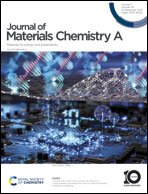Recent advances in exsolved perovskite oxide construction: exsolution theory, modulation, challenges, and prospects
Abstract
Heterogeneously supported metal nanoparticles are used in a wide range of chemical and energy conversion processes, including photocatalysis, solid oxide electrolysis cells, solid oxide fuel cells, methane dry reforming, and chemical looping combustion. Metal nanoparticles with small size and uniform distribution can be obtained by in situ exsolution under relatively low metal loadings. Moreover, metal nanoparticles exsolved from perovskite oxide lattice show high stability and excellent catalytic performance due to the embedded nature into the matrix. The lattice strain and the formation of oxygen vacancy during the exsolution process significantly enhance the oxygen ion transport capacity, making it one of the most potential materials with intensified oxygen ion transferability. Although this type of material has received extensive attention in recent years, there is still a lack of comprehensive understanding of its theoretical exsolution driving force and controlling methods. This review summarizes the existing exsolution theory and collates the methods to control the exsolution from the internal and external factors, providing guidance for the selection of suitable materials and exsolution pathways. This review also looks forward to the future research direction for exploiting the application of exsolved perovskite catalysts with better performance and suitability for the industrial field.

- This article is part of the themed collection: Journal of Materials Chemistry A Recent Review Articles


 Please wait while we load your content...
Please wait while we load your content...